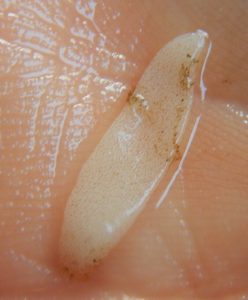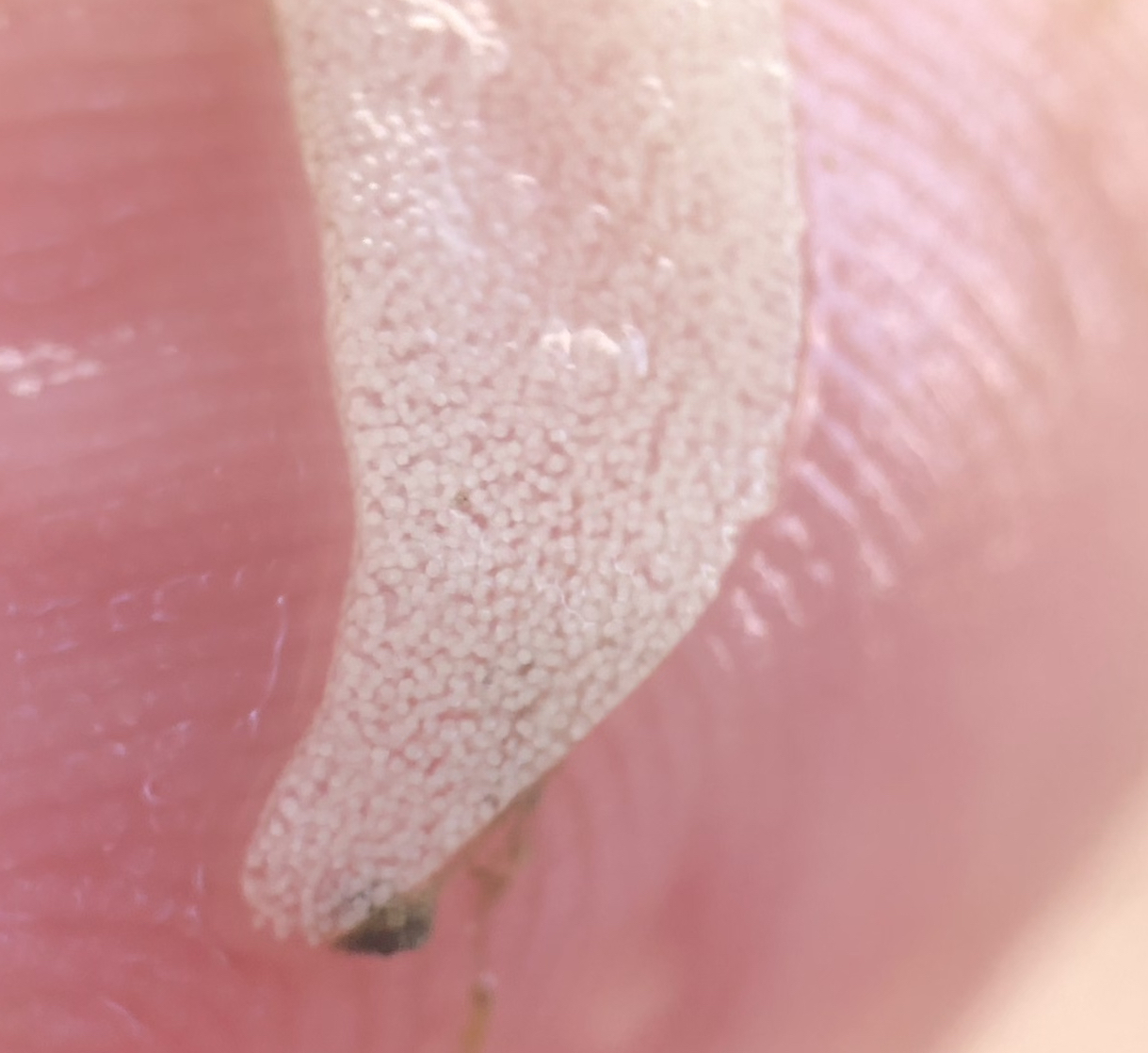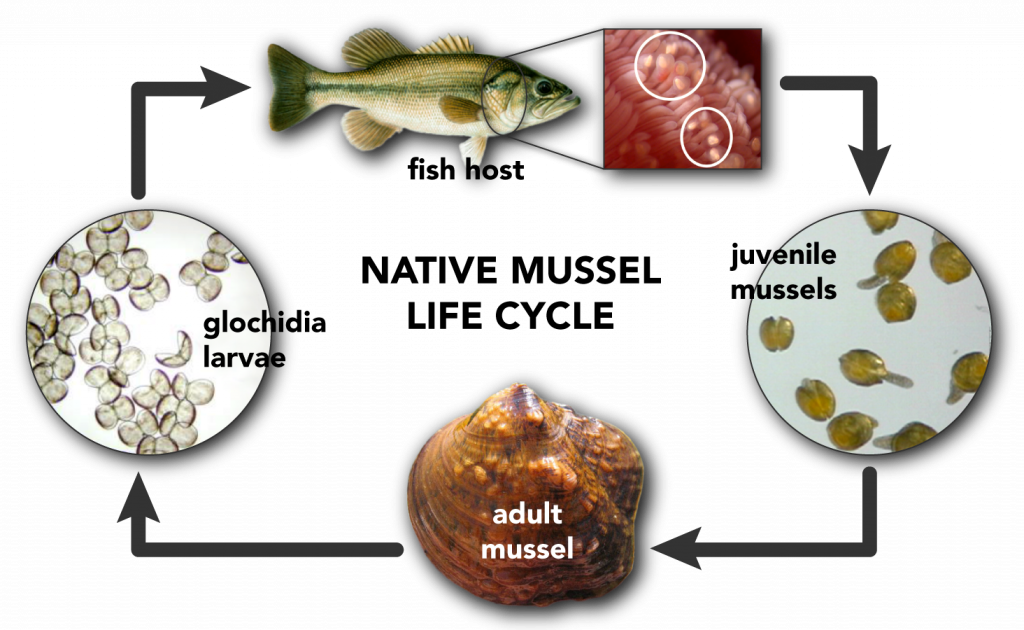Kingdom – Animalia
Phylum – Mollusca
Mollusks have:
- a mantle covering the foot and visceral mass
- reduced coelom (body cavity) containing the kidneys, gonads and pericardium
- a through gut with mouth and anus
- a nervous system
- an open circulatory system with a heart and aorta
- ctenidial gills
- a radula – “tongue” with thousands of teeth that can grab onto food
Mollusks are often covered by a hard exoskeleton secreted by the mantle, though slugs, octopuses, squids and cuttlefish have lost their mantle and shell.
Bivalvia – Clams
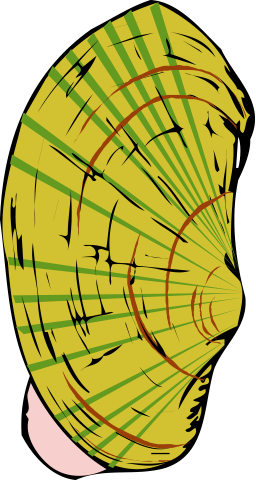
- Two shell halves connected by a hinge and “teeth”
- Shell composed of calcium carbonate secreted by mantle
- No head region or radula
- Separate males and females
- Filter feed through siphons
- Ctenidia (gills) for breathing and feeding
- A foot to dig into substrate or move along
- Larval stage (glochidia) are parasites on fish
Gastropoda – Snails and Slugs
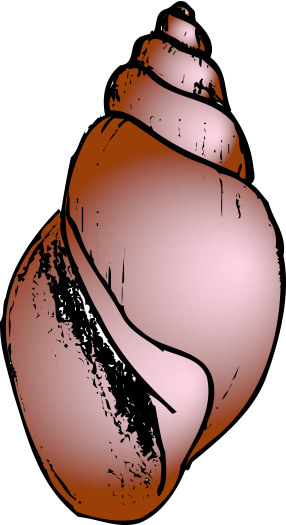
- a coiled shell – slugs and nudibranchs have lost their shells
- a muscular foot secretes mucus on which to glide
- a larval stage that undergoes torsion – a 180 degree twist
- asymmetrical bodies
- a pair of stalked eyes
Freshwater mussels rely on a host species, typically a fish, to complete their life cycle. Larval mussels, called glochidia, attach to the gills or fins or other parts of the host fish and eventually transform to juvenile mussels and drop off. Some species use lures that look like a potential prey item or even a mate.
Learn more about our research on freshwater mussels:
Freshwater Mollusk Ecology and Conservation
Urban Biotic Assesment Program
To see some of the other ways that mussels get their larvae onto fish, visit the Freshwater Mollusk Conservation Society.
Marine Mollusk Groups
Polyplacophora – Chitons
- Reduced head
- Flattened foot
- Eight dorsal valves
- Marine – no Illinois species
Aplacophora – Solenogasters
- No shell, mantle or foot
- Marine – no Illinois species
Cephalopoda – Cephalopods
Includes: squid, octopus, cuttlefish and nautiluses
- Large head attached to tentacles
- Tentacles are the “foot” divided
- Lack external shell (except nautilus)
- Squid and cuttlefish have internal shell
- Marine – no Illinois species
Monoplacophora – Deep-sea Limpets
- Single shell
- Flat foot
- Marine – no Illinois species
